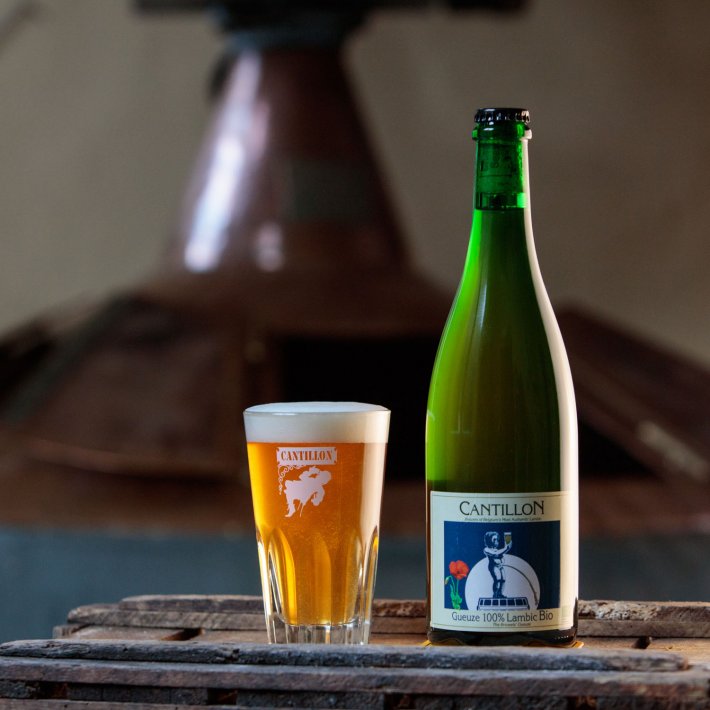In the Senne Valley of Belgium, lambic beers have been revered for centuries as a unique and exceptional style of beer. It is known for its complex and tart flavor and fermentation with wild yeasts and bacteria that are only found here. The beer is something entirely different.
Here are some of the best lambics you can try if you like sour beer or just want to experience something new.
- Cantillon Gueuze – Cantillon Brewery, one of Belgium’s leading lambic breweries is renowned for its Gueuze Beer. It is a complex blend of young and old lambics, with a fruity tart flavor.
- Lindemans Framboise: Lindemans Framboise, is a raspberry-based fruit lambic with a bright, red hue and fruity sweetness to counter its tart base.
- The 3 Fonteinen Geuze is a unique blend of lambics aged 1, 2, and 3. It has a rich flavor with notes of citrus and green apple that are not found elsewhere.
- Boon Oude Kriek – Boon Oude Kriek, a fruit lambic that focuses on cherries, is a fruity beer with deep, reddish hues. It has tart and fruity notes, which appeal to those who enjoy sour ales. The beer has deep shades and releases bold fruit flavors with every sip. It is the perfect beverage for those who want this style.
- Hanssens Artisanal Gueuze (Oude Lambic): Aged in oak barrels for several years, this traditional lambic produces a complex taste profile that includes notes of oak, sour fruits, and funk.
These are just some of the many lambics that you can find today. You will find that each brewery has its own unique character and flavor profile. I encourage you to continue exploring to discover more lambics to suit your tastes! Cheers!

History of Lambic Beers
The origin of the Senne River Valley
The origins of lambic beer can be traced to the Belgian Senne River Valley and Pajottenland area where this spontaneously fermented drink is thought to have been produced for generations.
Exploration and Analysis of Spontaneous Fermentation Systems
Natural selection may be the reason for lambic beer’s existence. The yeasts and bacteria in Pajottenland are sufficient to ferment beer, without needing additional yeasts.
Evolution & Resurgence
In the late 19th century, hops became more popular in beer, leading to new varieties. Lambic beer is still produced according to Belgian tradition. However, its popularity recently has increased.
Belgian beer culture depends on traditional methods and their significance
Today, the production of lambic beer is still carried out using old-fashioned techniques such as spontaneous fermentation and oak barrel aging for maximum flavor and aroma. Pajottenland is one of the top lambic breweries in Belgium.
Your palate determines which Belgian breweries are right for you, such as Cantillon Drie Fonteinen and Boon which offer exquisite examples.
The finest lambics are available now.
- Cantillon Gueuze – Is an irresistibly tart lambic blend aged 1, 2, and 3 years. It packs in complex flavors such as barnyard and green apple into a single delicious sip.
- Boon Oude Criek – Aged for 2 years, this lambic is then combined with tart cherry extract to create a combination of tart and fruity flavors. This includes almond, cherry and oak. Boon Oude Kriek has a vibrant red color with tart fruit flavors like almonds and cherries that combine perfectly to create an excellent wine.
- Lindemans Cuvee Rene – Lindemans Cuvee Rene, an aged Gueuze, boasts notes like lemon, green apple and oak.
- Tilquin Oude Gueuze – This beer is a combination of Lambics aged 1, 2, and 3 years, from different breweries in North America. It has earthy notes and citrus notes. Also, oak flavors are evident.
Production of Lambic Beers
Lambic beer is a traditional and intricately-crafted product, which requires spontaneous fermentation of oak barrels followed by oak fermentation. This is a brief overview of the production process:
The main raw materials used to make lambic beer are malted barley and unmalted white wheat. Aged hops also contribute unique flavor and character.
- Malting: In order to create a mashing, water and malted barley are mixed together. During this stage, enzymes present in the malted barley break down starches to fermentable sugars.
- Boiling with Hopping: Aged hops, unlike those used in conventional beers, are added after boiling to the mash. This allows wild yeasts and bacteria, which produce milder flavors, to take over fermentation.
- The wort is then chilled in a ship and exposed to the open air, where it will be inoculated with wild bacteria and yeast. This results in the spontaneous fermentation of Lambic beer. Lambic beers are unique because of this characteristic.
- Barrels: After the spontaneously fermented Wort has been placed into old oak barrels, often used in Lambic production or wine, for maturation it is usually aged for at least one to three years. This allows for complex flavors to develop as well as further fermentation and transformation by microorganisms.
- Blending and bottling: After the beer has been aged, it must be carefully blended using barrels of different ages to create a smooth flavor profile. The same goes for some variants like Kriek or Framboise, which are also aged with fruits, such as raspberries and cherries, to increase carbonation. They’re then bottled, adding additional sugar in order to encourage refermentation.
- Second Fermentation and Mature: Lambic bottles must be kept in a temperature-controlled environment to allow for the development of additional flavors. The period of time could be months, or even years to achieve maximum complexity and flavor.
The production of lambic beer is an ancient method that takes place in certain specialty breweries located within the Pajottenland area. Lambic beer is a highly sought-after product that requires expertise and patience.




